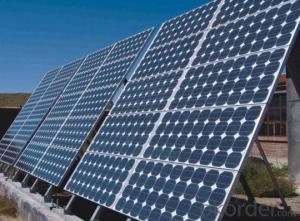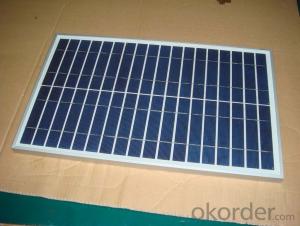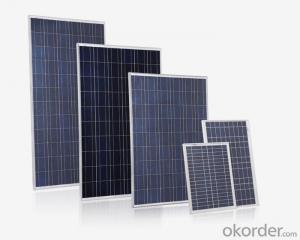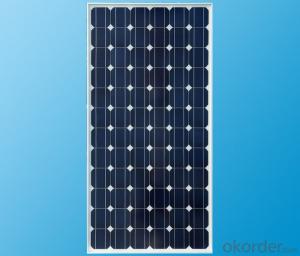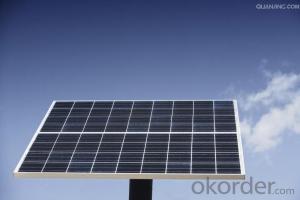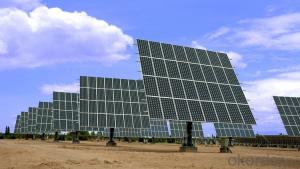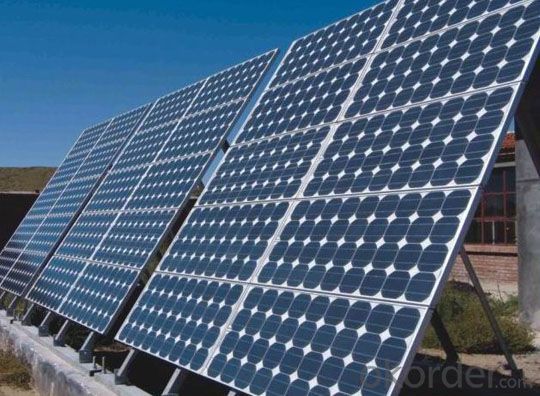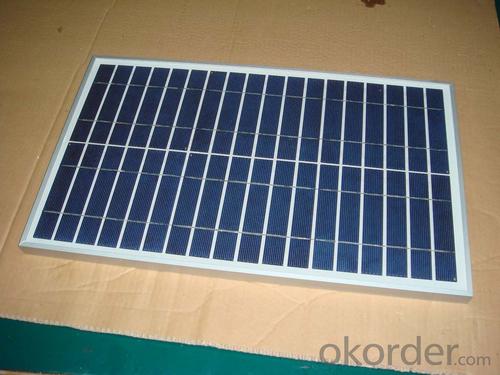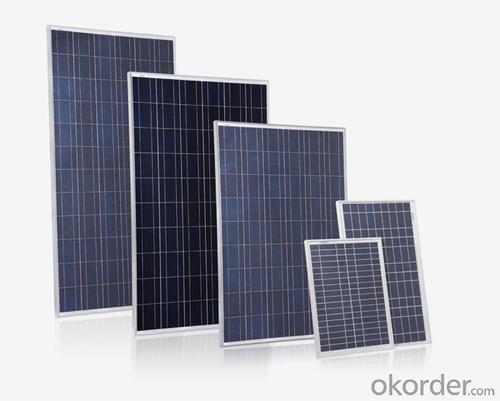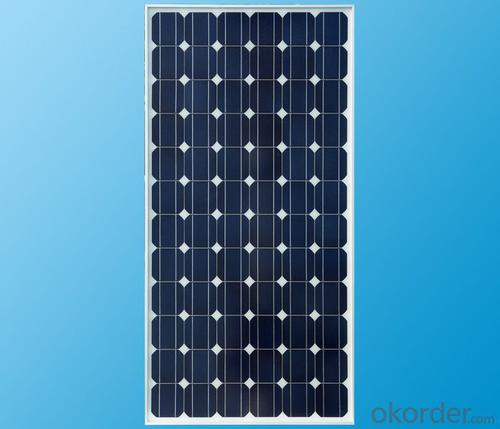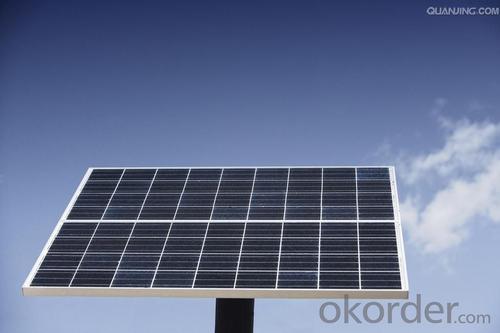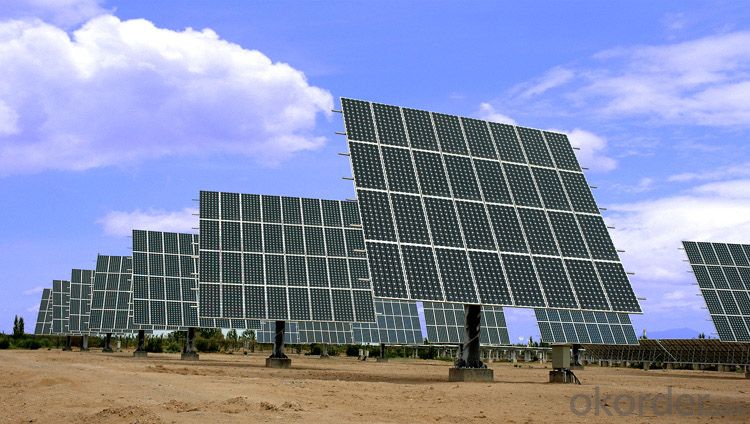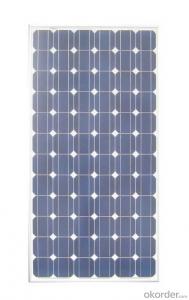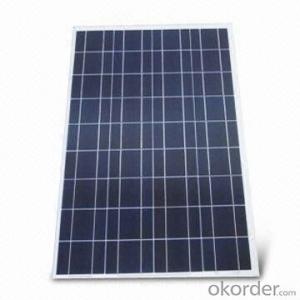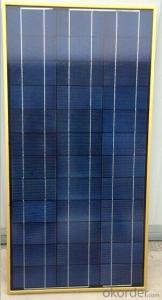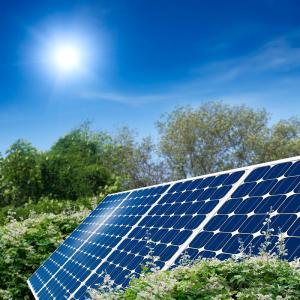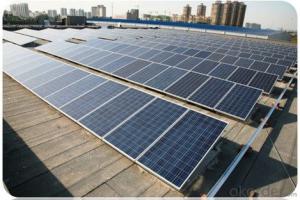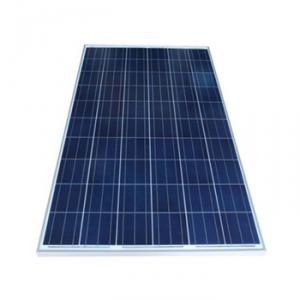3x6 Solar Cells Favorites Compare 140W 150W 260W Polycrystalline Solar Panel - Polycrystalline Silicon Solar Panel for Building Automation System
- Loading Port:
- China Main Port
- Payment Terms:
- TT OR LC
- Min Order Qty:
- -
- Supply Capability:
- 10000000000000 watt/month
OKorder Service Pledge
OKorder Financial Service
You Might Also Like
Quick Details
| Place of Origin: | Guangdong China (Mainland) | Brand Name: | CAP | Model Number: | 50w100w150w200w250w300w |
| Material: | Monocrystalline Silicon | Size: | 1385*1035*75mm | Number of Cells: | 72pcs |
| Max. Power: | 300w | type: | solar panel | color: | blue&black |
| warranty: | 5 years |
Packaging & Delivery
| Packaging Detail: | standard export package for solar panel |
| Delivery Detail: | 7-15 days for solar panel |
Specifications
solar panel
High Efficiency
25 years Warranty
High-transmissivity low-iron tempered glass
Solar Panel
50w100w150w200w250w300w
Characteristics
1,High and stable conversion efficienly based on over 4 years professional experience
2 ,High reliability with guaranteed +/-10% output power tolerance
3,Proven materials,tempered front glass,and a sturdy anodized aluminum frame allow modules to operate reliably in multiple mountily configurations
4,Combination of high efficicncy and attractive appearance
Quality and Safety
1,25 year 80%,10 year 90% power warranty 3 year power warranty
2,ISO9001:2000 (Quality Management system) certified factory
3,Product Quality warranty & products Liability Insurance to guarantee and user' benefits
4,Certifications TUV Intercert, CE Temperature Coefficients
| Module Type | 100w | 150w | 200w | 250w | 300w |
| Maximum Power at ST(Pmax)W | 100wp | 150wp | 200wp | 250wp | 300wp |
| Maximum Power Voltage(Vmp)V | 36/18 | 36/18 | 36/18 | 30.8v | 36/18 |
| Maximum Power Current(Imp)A | 2.77/5.55 | 4.16/8.33 | 5.55/11.1 | 8.11A | 8.33/16.66 |
| Open Circuit Voltage(Voc)V | 39.5/19.05 | 39.3/19.4 | 39.6/19.5 | 36.2V | 39.6/19.8 |
| Short Circuit Current(Isc)A | 3.04/6.09 | 4.58/9.16 | 6.1/12.2 | 8.7A | 9.16/18.33 |
| Cell Efficiency(%) | 18.60% | 18.10% | 18.60% | 17.80% | 18.10% |
| Module Efficiency(%) | 17.70% | 17.20% | 17.70% | 17.10% | 17.20% |
| Operating Temperature°C | -40°C to +85°C | -40°C to +85°C | -40°C to +85°C | -40°C to +85°C | -40°C to +85°C |
| Maximum system voltage | 1000V(IEC)DC | 1000V(IEC)DC | 1000V(IEC)DC | 1000V(IEC)DC | 1000V(IEC)DC |
| Power tolerance | -0.03 | -0.03 | -0.03 | -0.03 | -0.03 |
| Temperature coefficients of Pmax | -0.45%/°C | -0.45%/°C | -0.45%/°C | -0.45%/°C | -0.45%/°C |
| Temperature coefficients of Voc | -0.27%/°C | -0.27%/°C | -0.27%/°C | -0.27%/°C | -0.27%/°C |
| Temperature coefficients of Isc | 0.05%/°C | 0.05%/°C | 0.05%/°C | 0.05%/°C | 0.05%/°C |
| Weight(kg) | 8 | 11 | 14 | 20 | 25.5 |
| Number of cell(pcs) | 4*9 | 4*9 | 6*10 | 6*12 | 6*12 |
| Dimensions(mm) | 1194*534*35/30 | 1580*808*50/35 | 1471*670*40/35 | 1640*992*50 | 2000*1050*50 |
- Q: Can solar cells be used in areas with high pollution?
- Yes, solar cells can still be used in areas with high pollution. While pollution can reduce the efficiency of solar cells by blocking sunlight, advancements in technology have made solar panels more resilient. Additionally, regular maintenance and cleaning can help mitigate the impact of pollution on solar panels.
- Q: Can solar cells be used in water?
- Yes, solar cells can be used in water, but they must be specifically designed for underwater use to ensure their functionality and durability.
- Q: Can solar cells be used for powering data centers?
- Yes, solar cells can be used to power data centers. Solar energy can be harnessed through photovoltaic panels to generate electricity which can then be used to power the infrastructure of data centers. This renewable energy source can help reduce the carbon footprint and dependency on fossil fuels, making data centers more sustainable and environmentally friendly.
- Q: Can solar cells be used in hotels?
- Yes, solar cells can be used in hotels to generate renewable and clean energy. They can be installed on the roofs or other suitable areas of hotels to capture sunlight and convert it into electricity, reducing the reliance on traditional energy sources and lowering utility costs.
- Q: What is a multi-junction solar cell?
- A multi-junction solar cell is a type of solar cell that consists of multiple layers of different semiconductor materials, each designed to efficiently capture a different portion of the solar spectrum. This allows the cell to convert a wider range of sunlight into electricity, resulting in higher energy conversion efficiency compared to traditional solar cells.
- Q: How do solar cells perform in desert environments?
- Solar cells perform very well in desert environments due to the abundance of sunlight and high temperatures. The dry and clear conditions in deserts allow solar panels to receive maximum sunlight, resulting in optimal energy production. Additionally, the heat can actually enhance the efficiency of solar cells, as they work more efficiently at higher temperatures. However, it is important to regularly clean the panels to remove dust and sand accumulation, which can reduce their performance.
- Q: Can solar cells be used for powering remote data collection devices?
- Yes, solar cells can be effectively used for powering remote data collection devices. Solar cells convert sunlight into electricity, providing a sustainable and reliable source of power in areas where access to conventional electricity may be limited or non-existent. By harnessing solar energy, remote data collection devices can operate autonomously without the need for frequent battery replacements or external power sources, making them ideal for applications such as weather monitoring stations, wildlife tracking devices, or environmental sensors in remote locations.
- Q: Can solar cells be used in street lighting?
- Yes, solar cells can be used in street lighting. Solar street lights combine solar panels, batteries, and LED lights to generate and store energy during the day, which is then used to power the lights at night. This renewable energy source makes solar cells an efficient and sustainable option for street lighting, reducing carbon emissions and reliance on the electrical grid.
- Q: I am a purchasing manager for a EPC engineering company, and we are planning to purchasing some 4bb solar cells for one of our project in Taiwan, can I get a quotation online?
- Welcome to visit our company website for more information about the wholesale 3bb and 4bb polycrystalline and monocrystalline pv silicon solar cell price made in Taiwan and china mainland.
- Q: Can solar cells be used for powering airports?
- Yes, solar cells can be used for powering airports. Solar energy is a sustainable and renewable source of power, and airports have large areas of open space that can be utilized for installing solar panels. By harnessing the power of the sun, airports can reduce their reliance on non-renewable energy sources, lower their carbon footprint, and potentially save on energy costs in the long run. Additionally, solar power can also be stored in batteries for use during non-sunny periods or at night, ensuring a continuous power supply for critical airport operations.
Send your message to us
3x6 Solar Cells Favorites Compare 140W 150W 260W Polycrystalline Solar Panel - Polycrystalline Silicon Solar Panel for Building Automation System
- Loading Port:
- China Main Port
- Payment Terms:
- TT OR LC
- Min Order Qty:
- -
- Supply Capability:
- 10000000000000 watt/month
OKorder Service Pledge
OKorder Financial Service
Similar products
Hot products
Hot Searches
Related keywords
